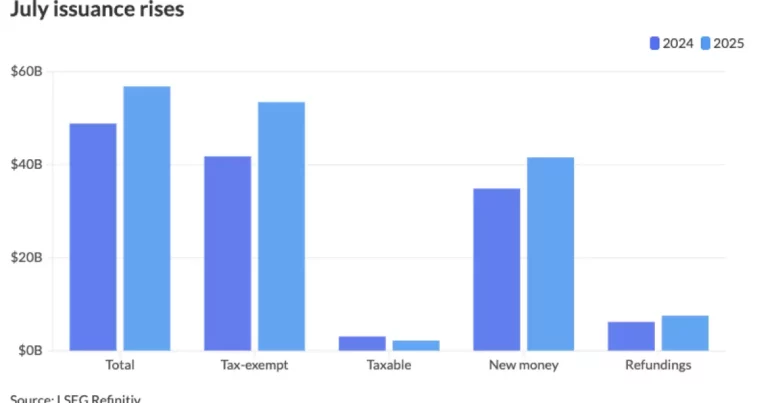The Rising Cost of Climate Recklessness: How Wildfire Risks Are Devastating Municipal Bonds

In recent years, the destructive force of wildfires has evolved from an environmental concern into an alarming economic threat. Elevated wildfire risks, driven primarily by climate change, are not just threatening ecosystems or public safety—they are infiltrating the very fabric of local governments’ finances. The recent research highlighted at the Brookings Institute underscores a troubling trend: the rising costs of borrowing for critical municipal services are directly tied to climate-induced wildfire threats. This correlation reveals how the reckless neglect of climate resilience is now imposing a substantial financial burden on communities that are most vulnerable to fire disasters.
As climate patterns shift, regions historically less prone to wildfires are increasingly affected, leading to a national crisis of fiscal stability. School districts, which serve as cornerstone institutions in our communities, face mounting challenges because their bonds are now more expensive to refinance and issue due to wildfire risk. Unlike private corporations, these public entities cannot relocate or avoid exposure to the risk. Their only recourse is to face the escalating costs of borrowing, which in turn hampers their ability to invest in infrastructure, education, and community services. The economic implications are profound: communities begin to pay a hidden tax in the form of higher borrowing costs, which could, over time, limit growth and prosperity.
Regardless of political leanings or economic ideologies, one fact remains clear—climate change and associated fires are becoming unavoidable realities, and financial markets are rising to acknowledge this harsh truth. When wildfires threaten to burn through local infrastructure and communities, the cost of funding recovery and prevention inevitably increases, creating a vicious cycle of vulnerability and financial strain.
Market Signals: The Cost of Climate Insouciance
The data from the recent academic analysis paints a stark picture: as wildfire risk increases by just one standard deviation, the cost of municipal bonds grows significantly—primary market spreads expand by 14 basis points, and secondary market spreads by 26 basis points. These may seem like small numerical shifts, but in the world of finance, they are substantial indicators of risk. They reflect a payout potential for bondholders that investors demand to compensate for the looming threat of wildfire damage.
This phenomenon signifies a larger systemic issue—the market is beginning to internalize climate risk, yet the pace of adaptation lags behind the urgency. The analysis focused on over 150,000 bonds issued over 20 years, specifically targeting fire-prone states, which are also often the most economically disadvantaged communities. The fact that bond spreads are widening far more than the mean underscores the recognition, however delayed, of wildfire risks as a serious economic factor.
This shift isn’t happening in isolation. Investor behavior often reacts to tangible threats—fires that devastate homes or critical infrastructure tell a visceral story. The wildfires in California and the projected Los Angeles events suggest that the market is now factoring in the potential for enormous insured losses, further driving up bond costs for municipal entities. This acknowledgment, though late, signals a critical wake-up call for policymakers to prioritize climate adaptation strategies or risk paying even higher prices in the future.
Economic Inequality and Vulnerability: The Hidden Toll
But the risks are not equally distributed. The study notes that communities with higher minority populations and those relying heavily on local revenue sources face disproportionately higher bond spreads in the face of wildfire risk. This is a stark reminder that climate change isn’t just a scientific or environmental issue—it’s an amplifier of existing social inequalities.
Regions that are socioeconomically vulnerable are paying the price for policies that sideline climate resilience. Their bonds are perceived as riskier, making it more expensive for them to fund vital services and infrastructure. The consequences are clear: higher borrowing costs could slow down recovery efforts and exacerbate inequality. These communities are trapped in a cycle where climate risks translate directly into economic hardship, further marginalizing groups that are already vulnerable.
The response from financial analysts like Smull indicates an emerging recognition that markets may soon fully price in climate risks. Yet, the degree to which this transition will be fair or equitable remains uncertain. If policymakers fail to embed resilience into their planning, the result will be a widening gap—not only in climate resilience but also in economic opportunity.
Policy Failures and the Need for Forward-Thinking Solutions
The increasing financial toll of wildfires exposes critical policy failures at multiple levels of government. The potential dismantling of agencies like FEMA, which plays a vital role in disaster response and mitigation, would only compound these issues. Without robust federal support, the financial burden shifts further onto local governments already strained by rising costs—costs that will inevitably be passed onto taxpayers and future generations.
The concept of “adaptation bonds,” which the researchers briefly highlight, offers some hope. They represent a proactive approach—funding mechanisms specifically designed to prepare communities for the increasing wildfire threat. These bonds could enable communities to invest in firebreaks, forest management, and infrastructure hardening before disasters occur, ultimately saving money and lives.
However, implementing such innovative financial instruments requires political courage and a recognition that climate adaptation isn’t optional—it’s essential for economic stability. Ignoring or delaying action only inflates the bill future taxpayers will have to foot. This is a fiscal issue as much as it is an environmental one: our inability to address climate risks now will lead to even steeper costs down the road.
In the final analysis, the rising costs associated with wildfire risks should serve as a wake-up call for center-right policymakers. Climate resilience isn’t about ideology; it’s about prudent governance and fiscal responsibility. By investing now in adaptation strategies, promoting responsible land use policies, and recognizing climate risk as a core component of municipal finance, we can reduce the economic damage looming on the horizon. If we continue to dismiss or downplay the urgency, we do so at our peril—witnessing a future where climate-induced disasters become an unaffordable burden on all.





